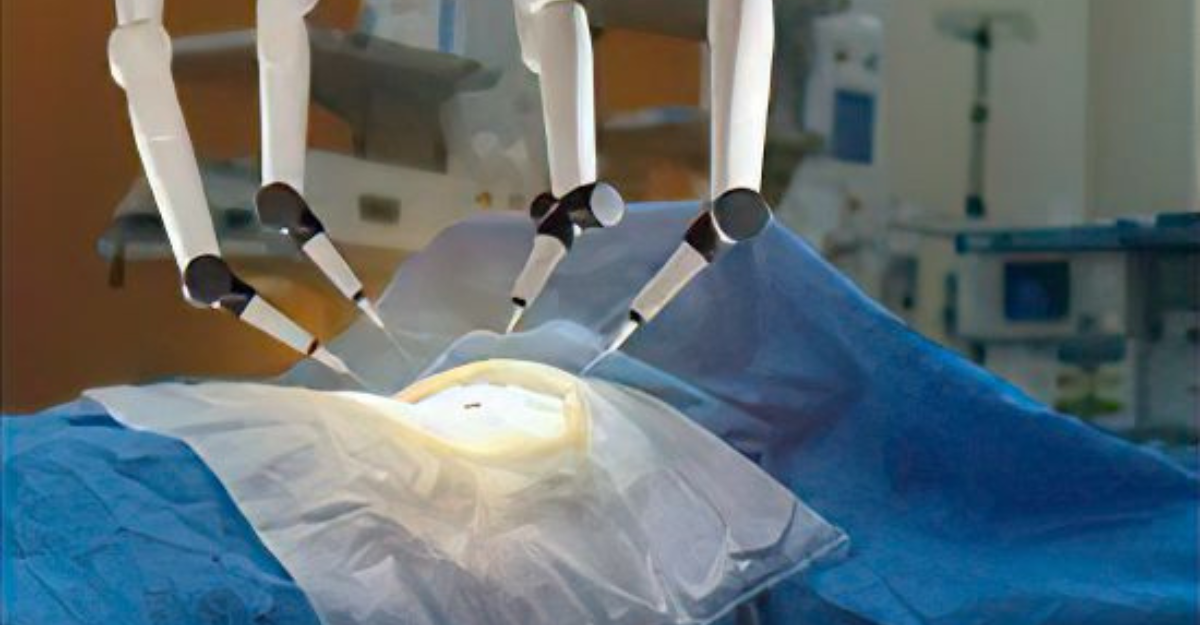Endometriosis, a condition in which tissue similar to the lining of the uterus grows outside the uterus, affects millions of women worldwide. Managing its symptoms and addressing the underlying causes often necessitates surgical intervention. In recent years, robotic surgery has emerged as an innovative option for treating endometriosis.
This blog will provide comprehensive insights into the key aspects of robotic surgery for endometriosis, including its benefits, the procedure itself, and what to expect during the recovery process.
Understanding Endometriosis
Before delving into the realm of robotic surgery, it is crucial to grasp the fundamentals of endometriosis. This enduring condition can give rise to pain, fertility issues, and various complications. Abnormal growth of tissue may manifest on the ovaries, fallopian tubes, and other pelvic structures, resulting in adhesions and scarring. While traditional treatments encompass medication and laparoscopic surgery, certain patients may find that robotic surgery offers a more advanced and efficacious alternative.
The Rise of Robotic Surgery
Evolution of Surgical Techniques
The field of surgery has been revolutionized by advancements in medical technology. Traditional open surgeries, which require large incisions and lengthy recovery periods, have been replaced by minimally invasive procedures. One such approach is laparoscopy, which utilizes small incisions and a camera for visualization and has become a common method for treating endometriosis. However, the next step in this evolution is the emergence of robotic surgery, taking surgical precision and efficiency to new heights.
The Role of Robotics
Robotic surgery utilizes a surgical robot, which is operated by a skilled surgeon, to execute intricate procedures with unparalleled precision. The da Vinci Surgical System, a widely employed robotic platform, empowers surgeons to manipulate robotic arms with exceptional dexterity surpassing that of the human hand. This heightened level of precision proves particularly advantageous when addressing delicate structures impacted by endometriosis.
Advantages of Robotic Surgery for Endometriosis
Enhanced Precision
Robotic surgery offers exceptional precision as one of its key advantages. With robotic arms capable of precise movements in tight spaces, surgeons can navigate and operate with heightened accuracy. This becomes particularly crucial in cases of endometriosis, where the abnormal tissue may be intricately intertwined with vital structures.
Improved Visualization
The da Vinci system offers surgeons a highly detailed and magnified view of the surgical site through 3D high-definition visualization. This enhanced visualization plays a crucial role in identifying and effectively removing endometriotic lesions that may be difficult to detect with the naked eye or traditional laparoscopy.
Reduced Blood Loss and Scarring
Robotic procedures, in comparison to open surgeries, generally yield advantages such as decreased blood loss and minimal scarring. The use of smaller incisions mitigates trauma to surrounding tissues, resulting in a speedier recovery and aesthetically pleasing outcomes for patients.
The Robotic Surgery Procedure
Preoperative Preparation
Prior to undergoing robotic surgery for endometriosis, patients undergo a meticulous preoperative preparation. This encompasses a comprehensive evaluation of their medical history, extensive imaging studies, and thorough discussions regarding the associated risks and benefits of the procedure. In some cases, patients may be required to observe a specified period of fasting, refraining from food and drink, before the surgery.
Anesthesia and Incision Placement
During the surgery, patients receive anesthesia, and small incisions are made to accommodate the robotic instruments. From a console, the surgeon adeptly controls the robotic arms, skillfully manipulating the instruments with precision. The advanced 3D visualization offered by the robotic system greatly enhances the surgeon's ability to navigate the pelvic region with utmost effectiveness.
Lesion Identification and Removal
After positioning the robotic arms, the surgeon carefully identifies and removes endometriotic lesions with utmost precision. The sophisticated robotic system enables a comprehensive examination of the pelvic cavity, guaranteeing that all affected tissue is effectively treated.
Closing Incisions and Postoperative Care
Following the removal of the lesion, the incisions are carefully closed, and patients are then transferred to the recovery area. Thanks to the minimally invasive approach of robotic surgery, hospital stays are typically shorter compared to traditional open procedures. Postoperative care encompasses pain management, diligent monitoring for potential complications, and guidance on gradually resuming normal activities.
Recovery and Postoperative Care
Shorter Recovery Time
Robotic surgery offers several benefits for endometriosis, including a shorter recovery time compared to traditional open surgery. Patients generally experience less pain and can resume their normal activities sooner. However, it's important to note that the exact recovery period varies from person to person, and factors such as overall health and the extent of the surgery can influence it.
Pain Management and Follow-Up
Effective pain management is of utmost importance during the postoperative period. Patients are provided with prescribed pain medications to alleviate any discomfort experienced in the initial days following the procedure. Additionally, follow-up appointments with the surgeon are scheduled to closely monitor the progress of recovery and address any concerns or questions that the patient may have.
Resuming Normal Activities
Although robotic surgery offers shorter recovery times, patients are still advised to gradually return to their normal activities. Within a few days, they can start with light activities, and with the guidance of the surgical team, they can gradually reintroduce more strenuous activities. Open communication about the recovery experience is encouraged to ensure the best possible care.
Considerations
Patient Selection
Although robotic surgery provides many advantages, it is important to note that not all patients with endometriosis are suitable candidates. Patient selection plays a vital role, taking into account factors such as the severity of the disease, overall health, and previous surgical history. The surgical team conducts a comprehensive evaluation to determine the most appropriate approach for each case.
Conclusion
Robotic surgery has revolutionized endometriosis treatment, offering improved precision, reduced invasiveness, and faster recovery times. When considering surgical approaches, it is crucial to collaborate with a qualified healthcare team. By understanding the benefits, procedure, and recovery process, patients can make informed decisions about their health. If you're contemplating robotic surgery for endometriosis, consult with your healthcare provider to determine the best course of action tailored to your individual needs and circumstances.

